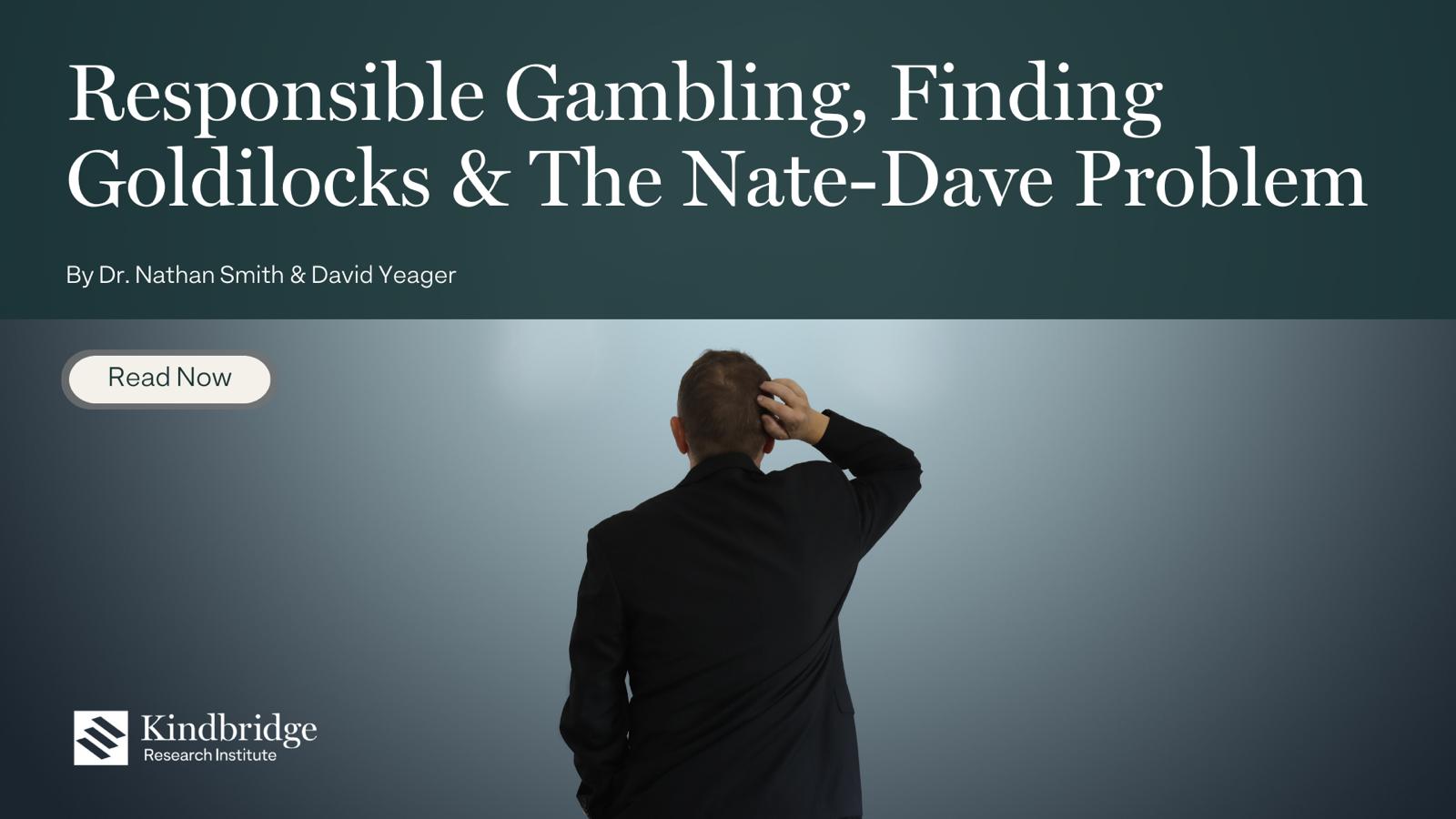Responsible Gambling has been the trending topic and the most controversial construct in our field, as of late. There have been some excellent opinion pieces and discussions on the topic, like the discussion between Brian Hatch and Martin Lychka at the most recent Next.io conference in New York City early March, which asked the fundamental question, “What is responsible gambling?”
Two Definitions of RG
While there are a variety of reasonable definitions, we have found two that provide a better summary of the state of responsible gambling. First, the Massachusetts Gaming Commission’s widely accepted middle–of–the–road definition, states that responsible gaming is “The provision of gambling services designed to encourage players to maintain their gambling at a healthy level and minimize harm to consumers and the community.”
In contrast, a recent podcast presented by a person with lived experience of gambling addiction provided this alternative definition: “Responsible gambling is bullsh*t.” We hope our own foray into this discussion will provide a useful perspective on the subject without straying into the territory outlined in the second definition.
What? Who? How? How will we know?
When designing any public health intervention, one of the most important early steps is getting a clear answer to four questions: What is the harm to be prevented? Who is the harm affecting? How does the intervention reduce the harm? How will we know if the harm is being reduced?
Any successful public health intervention has a clear answer to these four questions. One simple example is seatbelts.
- What is the harm to be prevented? Death and injuries in car crashes.
- Who is the harm affecting? People in cars that are involved in crashes.
- How does the intervention reduce the harm? The seatbelt, along with later inventions like the airbag, keep a person in the most protected part of the vehicle during a crash.
- How will we know if the harm is being reduced? We know seatbelts work if people who wear them have fewer fatalities and injuries in car crashes than those who do not.
This seems simple, but responsible gambling interventions often struggle to produce compelling answers to these questions. While there are often significant problems with questions 1 and 4, the Nate-Dave Problem presented below gets at questions 2 and 3.
The Nate-Dave Problem
Our understanding of the Nate-Dave Problem came about during a discussion between Kindbridge Research Institute’s Executive Director, Dr. Nathan Smith and ROTC Program Coordinator,David Yeager – the authors of this piece. While discussing our opinions about what aspects of responsible gambling work and don’t work, we found that we each personally find responsible gambling interventions unhelpful for different reasons.
Nate is an occasional gambler, one who bets only modest amounts a few times a year, stays well within his limits, and has never experienced harm of any kind from his gambling. Because Nate does not experience gambling–related harm, responsible gambling products provide him no discernable value.
Dave has had a different experience with gambling. While serving in the Army in Korea, Dave fell into a gambling addiction that lasted for many years and took an enormous financial and personal toll on him. Dave has been very public about his story, and you can read about it in his book, Fall In: A Veteran with a Gambling Addiction. Like Nate, he sees no personal value in responsible gambling tools. If the knowledge that he was harming himself, his wife, his young children, his finances, his unit, and the United States Army were not enough to prevent him from gambling, a pop–up on a gambling machine, or some other RG tool, certainly would not have helped.
Fundamentally, the Nate-Dave Problem is that many responsible gambling interventions provide no value to the large group of people who do not experience harm from their gambling, and no value to the small number of people who experience significant harm from gambling.
Searching for Goldilocks
So what about the people between the Nates and Daves? The numbers might look something like this: the percentage of the population who gamble without harm (the Nates) make up between 80 and 95% of population, depending on where, what, and how you measure. The percentage of people experiencing significant harm (the Daves) might be between 2 and 10%, again depending on a variety of factors. By this math, only 5 to 15% of the population who gambles would be in the Goldilocks Zone and have a chance to benefit from RG tools – let’s call it 10%, for simplicity.
The discussion of the Nate-Dave Problem is not suggesting that helping “only” 10% of the population is not worthwhile, but that spending money, creating programs, and more does not necessarily lead to any real-world reduction in harm from gambling. In order to actually help people, we all, including ourselves, need to do a better job of thinking, planning, measuring, and implementing all interventions if we have any chance of actually helping people.
Thoughts for Regulators
We hope the Nate-Dave problem is a useful concept for anyone who works in responsible gambling, but we think it has particular benefit for the regulators who are ultimately responsible for deciding on what responsible gambling interventions occur in states. Specifically, we think there are a few ideas regulators should take from this article:
1) Don’t mistake taking action for producing value. Creating an RG program does not necessarily reduce gambling-related harm. Nor does spending money, writing white papers, holding meetings, collecting positive anecdotes, or any of a dozen other actions that are commonly substituted for actual evidence of efficacy in our field. A good place to start thinking about the efficacy of your RG programs is with #2, below.
2) Every responsible gambling program running in a state should be able to provide a clear and simple answer to the four questions noted above: What is the harm to be prevented? Who is the harm affecting? How does the intervention reduce the harm? How will we know if the harm is being reduced?
If you as the regulator don’t understand the answers you are getting, keep asking questions until you do. The number of interventions currently running in the US with no clear idea of who they are supposed to be helping and how are legion. Even if it is unlikely that these shoddy interventions will hurt someone directly, wasting the precious funds set aside for reducing gambling harm in America on poorly thought-out interventions is itself destructive.
3) There is a need for more precise use of language around responsible gambling, problem gambling, and gambling disorder. When speaking about responsible gambling interventions, it is common to hear regulators and others address gambling addiction, treatment options, GA, voluntary self-exclusion, and other concepts that are meant to help people experiencing serious gambling-related harm. Discussions of resources aimed at the Daves of the world are extremely important, but they are not responsible gambling. The blending of these two distinct constructs produces confusion and makes it harder for regulators to make good decisions. The important task of helping the Daves of the world should be accomplished with separate distinct programs with their own funding.
4) Ask for help if you need it. There are more people working in the field of responsible gambling and problem gambling than there have ever been, and every state has large universities with public health professionals who are trained in intervention design and implementation that work for the benefit of the public health in that state. If you don’t know where to start, call us. We can talk to you about these topics confidentially and free of charge.
5) Include people with lived experience of gambling harm in every step of your process. Something we have always done at KRI is to include people with lived experience of gambling harm in all our work. We recommend either setting up a formal lived experience committee, a group of ad hoc lived experience advisors, or even just making a handful of connections with lived experience who can help you stay on track. This work is hard, and everyone needs to be included if we’re going to make long-term progress.


